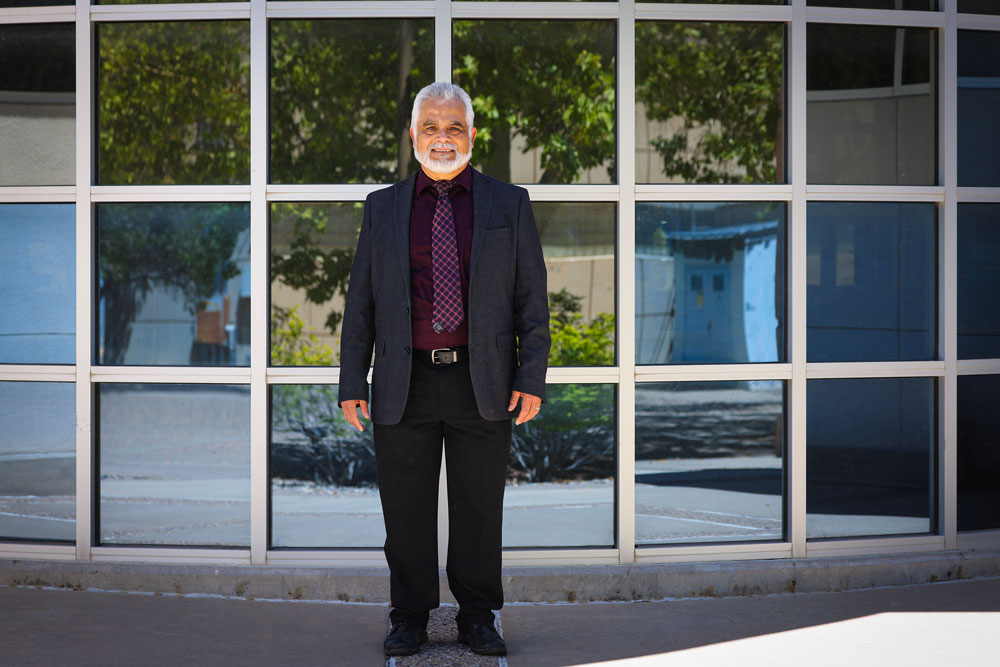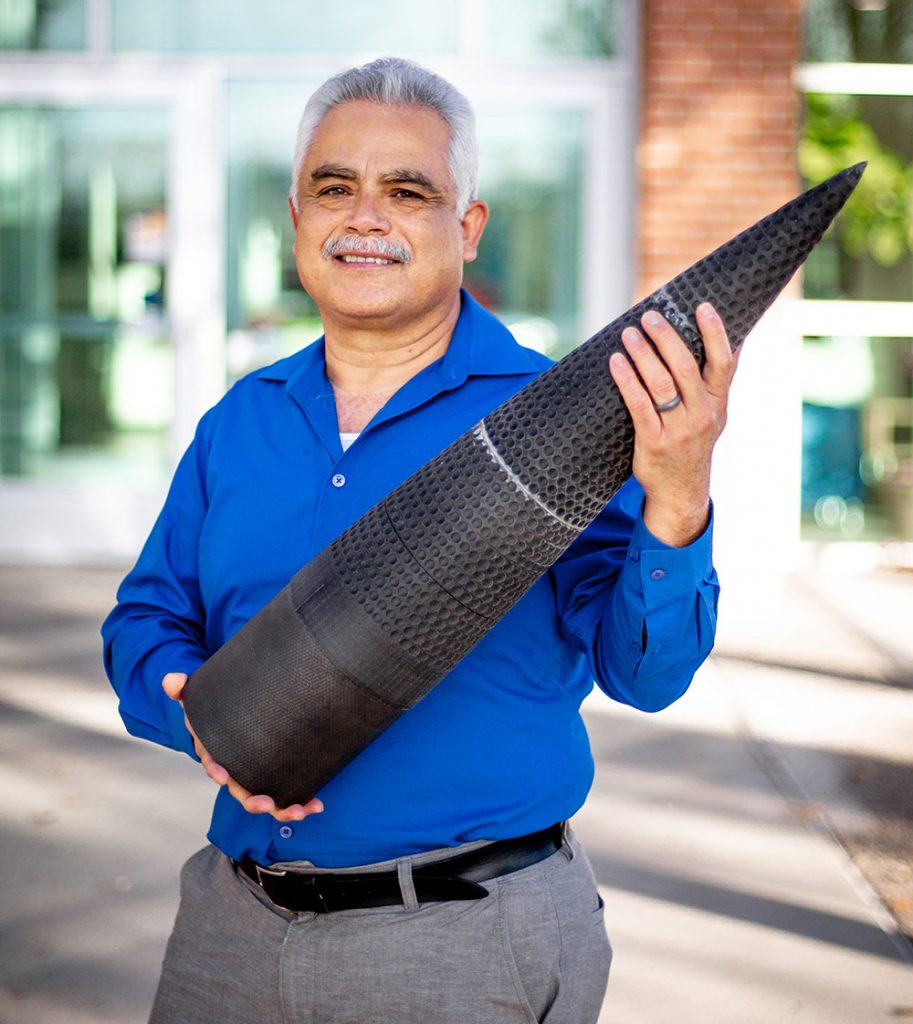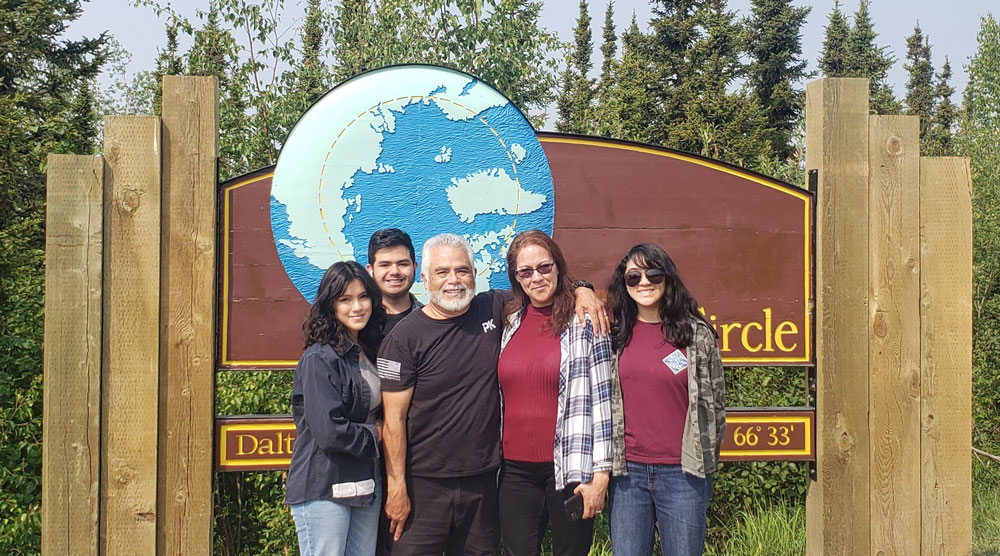A true story of the American dream

“I was the only farm worker who had a calculus book in his car,” Sal Rodriguez joked when I asked him about his upbringing.
But it was no joke. The son of immigrants, Sal grew up in the tiny town of Calexico, California, and worked in the fields to put himself through college. “My dad instilled in us a work ethic and my mom always believed in education. They wanted us to get good grades and that is what I did.”
But Sal went far beyond getting good grades. He has earned three master’s degrees and two doctorates, has 240 publications to his name along with multiple patents and copyrights, and has won countless accolades in his nearly 30-year Sandia career.
HENAAC Scientist of the Year

Great Minds in STEM, which recognizes America’s top engineers and scientists from the Hispanic community, will honor Sal as Scientist of the Year at its annual Hispanic Engineer National Achievement Awards Conference. It’s a first for a Sandian. “I am out of my skin here. I’m thinking this can’t be real, you know? I am still pinching myself,” Sal said.
While Sandia initially nominated Sal for the Outstanding Technical Achievement Award, the committee elevated his nomination to Scientist of the Year. Scientist of the Year and Engineer of the Year awards are the highest of the conference’s honors, reserved for individuals who model excellence and leadership, making profound contributions to industries, STEM fields, communities and the nation.
In 2012, Sandia radar systems manager Steven P. Castillo received the the conference’s inaugural Engineer of the Year Award. The Scientist of the Year category was also added that year.
A long resume
Sal has quite the resume, encompassing 38 years of experience in design, safety and analysis of nuclear, non-nuclear and aerodynamic systems. His expertise spans computational fluid dynamics, advanced high-temperature refractory high-entropy alloys, turbulence, aerodynamic drag reduction through surface modification, advanced manufacturing, swirl and heat transfer. He has designed and modeled gas, water, molten salt and heavy-water-cooled reactors. However, Sal talks most passionately about some of his recent projects.
One was a collaboration with a University of New Mexico student involving fluid dynamics. They reduced drag on a rocket and a Ford Mustang by 40% and 25%, respectively, by dimpling their surface, similar to the concept of putting dimples on a golf ball to make it fly farther. Another project involved advanced high temperatures in molten salt reactors.
Sal believes his team holds the record for running molten salt corrosion experiments at the highest temperatures ever, 965 degrees Celsius, while leaving no visible corrosion of the materials. Sal is also proud of his recent work to promote small modular reactors, helping countries like Estonia, Armenia and Slovenia transition from shale energy to nuclear energy to become energy independent. But one of his proudest achievements is the fluid dynamics and turbulence book he authored, “Applied Computational Fluid Dynamics and Turbulence Modeling,” which is currently used worldwide.
The power of perseverance
Sal is one of those success stories that proves the power of perseverance. Sal’s dad, Salvador Rodriguez Sr., came to the U.S. from Guanajuato, Mexico, when he was just 17 years old. Deciding to make something of his life, he crossed the border illegally with very little food and water and traveled through more than a hundred miles of desert. He later married Juana Barboza, also a Mexican immigrant. The couple was determined to raise a family in the U.S., prompting both to earn their U.S. citizenship. “That is the best inheritance that I have gotten,” Sal Jr. said.
While his parents instilled a work ethic in Sal and his siblings, Sal pursued it far beyond their expectations. During his sophomore year in high school, some students from UCLA visited his geometry class and talked about careers in engineering. “I looked at the list, and I saw the words nuclear engineering, and I was like, ‘wow, I want to be that!’ I was 16. That is what opened my eyes, and ever since then that was my dream.”
Sal worked in the fields with his grandmother picking strawberries and raspberries during summers and helped his dad irrigate to earn money. It was on one of those days that Sal’s dad told him, “OK, now that you’re 17, about to graduate from high school, either you join the military or you get a job, but you’re on your own. What are you going to do now?”
Sal remembers that when he told his dad about his plan to go to UC Santa Barbara, to get a bachelor’s degree in nuclear engineering, his dad responded with a simple “OK, good,” not grasping the significance until years later.

Not done yet
Sal continues his work at Sandia while raising three kids with his wife of 26 years. Two of his kids are in college, pursuing careers in engineering like their dad, while the youngest, who is still in high school, is earning awards for chemistry. In his free time, Sal works with middle and high school kids from underserved minority populations through the Sandia Science Club he founded, and with Manos, Sandia’s hands-on science and engineering program for Hispanic students. He also loves to cook traditional family recipes, has a black belt in Okinawa-style karate and plays ranchera and rock bass guitar with a band.
It’s clear that Sal not only has a passion for his work but for life. He says being recognized for that passion is amazing. “When I found out that I was the first Sandian ever to get this award, that is pretty humbling. Yet I will say, the best of me is not yet out there.”